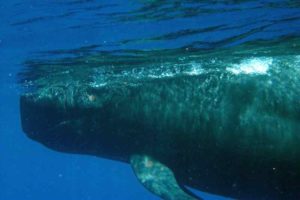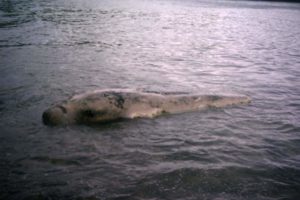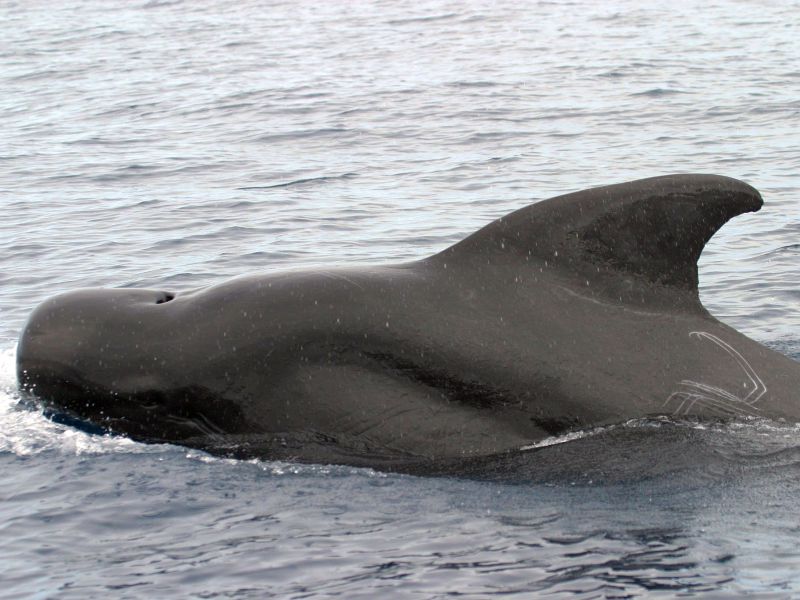 Pilot whales belong to the family of the oceanic dolphins, just like their larger cousins the killer whales. There are two species the long-finned pilot whale and the short-finned pilot whale.
Pilot whales belong to the family of the oceanic dolphins, just like their larger cousins the killer whales. There are two species the long-finned pilot whale and the short-finned pilot whale.
Common throughout the world’s oceans, the long-finned species live in cold waters only, the short-finned species prefers warm tropical waters.
They are nomads living in open seas, usually avoiding shallow coastal waters.
They are a medium-sized species of whale, growing to about 5 to 6 meters, and can weigh in up to 3 tons.
Short-finned pilot whales (Globicephala macrorhynchus)

Seeing a pod of pilot whales is quite common outside Fiji’s reefs and lagoons. At any time of the year, those members of this oceanic dolphin family may be seen.
Pilot whales are very social. They live in family pods of a few dozen individuals. Occasionally, they join with other groups to form very large pods of many hundreds of animals spread out over a wide ocean area.
They often mingle with bottlenose or spinner dolphins for protection or to hunt collaboratively.
On occasion, we’ve even observed them around humpback whales or fin whales, as this footage shows. Even sharks seem to follow along, as seen at the end of the footage
Pilot whales can be very curious, sometimes approaching a drifting boat or even snorkellers in the water. They are also regularly seen spy-hopping -pushing their heads vertically high out of the water and looking at the boat and people.
 Sometimes, exciting snorkeling experiences are possible. When in the water, one can clearly hear their whistles and clicks, with which they communicate and navigate.
Sometimes, exciting snorkeling experiences are possible. When in the water, one can clearly hear their whistles and clicks, with which they communicate and navigate.
Pilot Whales hunt together using sound, air bubbles, and group coordination to outsmart their food animals.
The Pilot Whale feeds mainly on squid, but they may also eat other small mesopelagic fish.
Pilot Whale Stranding
Of the toothed whales, they hold the sad record of beaching themselves the most. It is not really understood what leads to those group strandings.

Theories range from anomalies in the Earth’s magnetic field, or the leader of the pod being sick and disoriented or infrasound and noise pollution in the world oceans.
But their strong social bond lets even healthy members of the pods follow the disoriented individuals into the shallows.
Conservation
Pilot whales have always been hunted in history. This, fortunately, has very much stopped. But still, a few hundred animals are commercially hunted today by some stubborn Countries that consider it part of their tradition…
Countries engaging in the pilot whale hunt are the Faroe Islands, Greenland and Japan.

Pilot whales “take fish” that have been hooked on long lines, as reported by companies involved in the longline fishing industry. The number of whales hooking themselves in the process is not known.
Exact data on the worldwide numbers of pilot whales is estimated only. Figures of their total population status are estimated to be around 1 million



